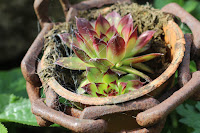Beginners watercolour - Mixing skin tones
Like
drawing people and portraits, choosing the right colours for skin
tones can be daunting for beginners. However it need not be. As I
have said in previous posts on colour, it is important to develop
your own palette of colours as we all see colours differently and
have our own favourites.
In
the YouTube video linked at the end of this post, I go through a few
colour combinations to get you started. Build on this by spending
some time making your own mixes from the colours you already have and
making a colour chart with notes of the colours used.
I
begin with a mix of Yellow Ochre and a small touch of Permanent
Alizarin Crimson, altering the amounts to either more yellow or more
pink for different areas. I would advise that you start by having
mixes of just two colours, or three at the very most. The other
colours used in the video are Raw Umber, Burnt Sienna, Burnt Umber,
French Ultramarine, Cobolt Blue, Cadmium Yellow and Cadmium Orange.
For
the shadows I use either blue, violet or a more concentrated mix of
the same colour. Look very carefully at your skin, you will see many
more colours than you first think.
Don't forget that in watercolour you use the white of the paper to come
through the transparent paints and create lighter colours. Also
remember that colours dry lighter than when they are applied. Be bold
with your colours and enjoy your painting.
Always keep in mind that art should be fun, by making notes and trying out colours
you will build your confidence, but you should never be afraid of
making mistakes. With watercolour and colour mixing, you will
progress by trial and error and by practising as often as you can.
One
final thought...Never assume you know what colour something is,
however familiar the subject....Look, look and look again!
Link to book referred to in video :-




.png)
Comments
Post a Comment